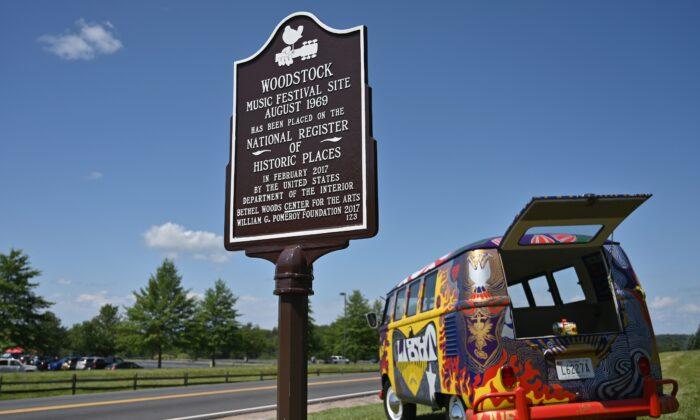It was a very bad year for the flu. The pathogen came in two large waves. This is only obvious in retrospect. At the time, not so much. Life went on as normal. There were gatherings. There were parties. There was travel. There were no masks. Doctors treated the sick. Traditional public health reigned as it had during the flu pandemic 10 years earlier.
No one considered lockdowns.
It’s a good thing because it was in the thick of this that many “super-spreader” events took place, among which was Woodstock itself. That event influenced all subsequent popular music, and continues to do so today. No one was denied schooling or worship or separated from loved ones while they were dying. Weddings took place as normal. Indeed, hardly anyone remembers any of this.
This flu strain (H3N2) spread from Hong Kong to the United States according to the predictable timetable, arriving in December 1968 and peaking a year later. It ultimately killed 100,000 people in the United States, mostly over the age of 65, and 1 million worldwide.
So, in terms of lethality, it was deadly and scary.
And this happened in the lifetimes of every American over the age of 54.
No mothers were arrested for taking their kids to other homes. No surfers were arrested. No day care centers were shut even though there were more infant deaths with this virus than the one we just experienced. There were no suicides, no unemployment, and no drug overdoses attributable to flu.
Media covered the pandemic, but it never became a big issue.
The only actions governments took were to collect data, watch and wait, encourage testing and vaccines, and so on. The medical community took the primary responsibility for disease mitigation, as one might expect. It was widely assumed that epidemics required medical, not political, responses.
It’s not as if we had governments unwilling to intervene in other matters. We had the Vietnam War, social welfare, public housing, urban renewal, and the rise of Medicare and Medicaid. We had a president swearing to cure all poverty, illiteracy, and disease. Government was as intrusive as it had ever been in history. But for some reason, there was no thought given to shutdowns.
Which raises the question, why was this time different? We will be trying to figure this one out for decades. Was the difference that we have mass media invading our lives with endless notifications blowing up in our pockets? Was there some change in philosophy such that we now think politics is responsible for all existing aspects of life?
Maybe all of these were factors. Or maybe there is something darker and nefarious at work, as the conspiracy theorists would have it. Regardless, they all have some explaining to do.
By way of personal recollection, my own mother and father were part of a generation that believed they had developed sophisticated views of viruses. They understood that less vulnerable people getting them not only strengthened immune systems but contributed to disease mitigation by reaching “herd immunity.” They had a whole protocol to make a child feel better about being sick: I got a “sick toy,” unlimited ice cream, Vicks VapoRub on my chest, a humidifier in my room, and so on.
They would constantly congratulate me on building immunity. They did their very best to be happy about my viruses, while doing their best to get me through them.






